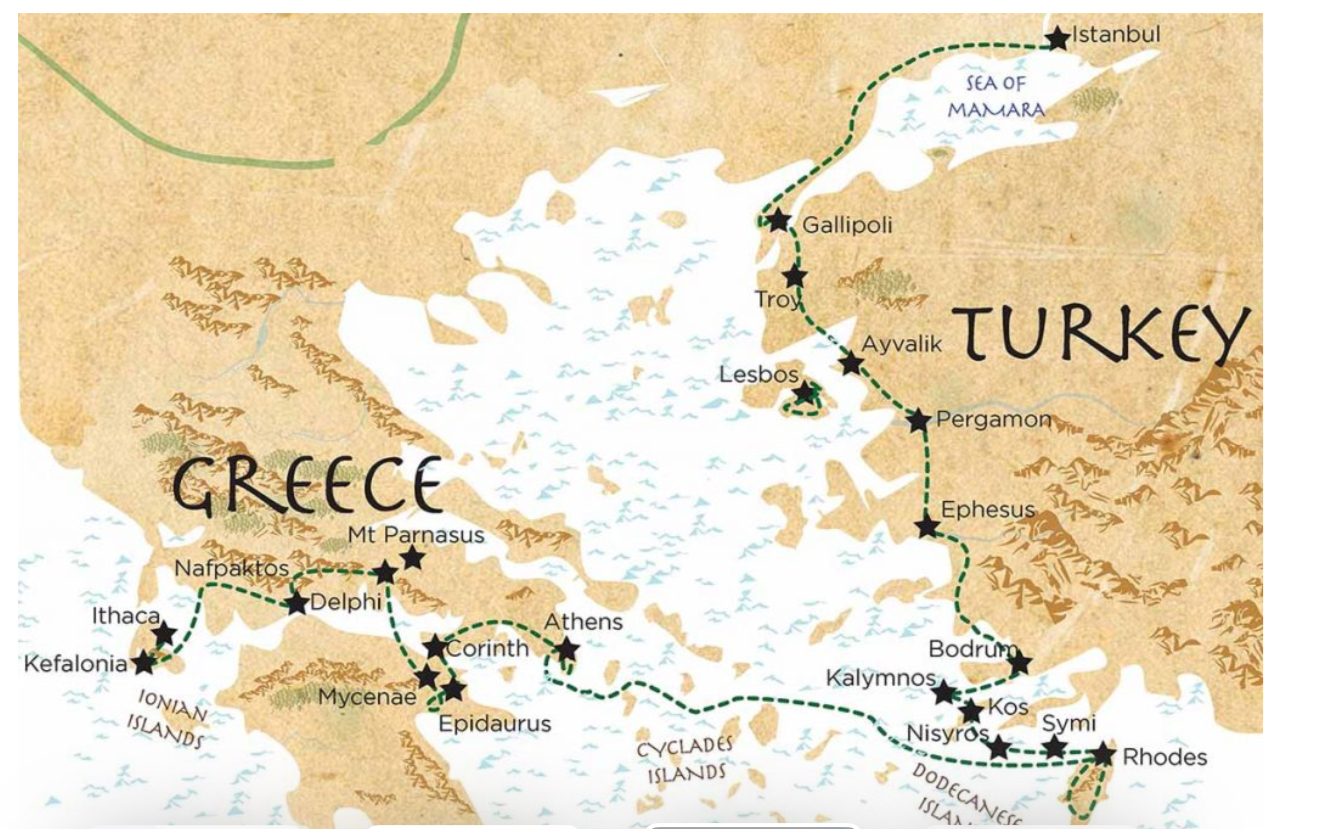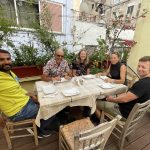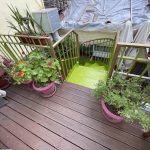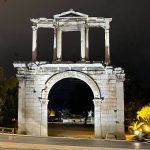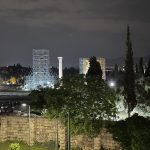After a great morning ride on the island of Rhodes, we boarded an Aegean Airlines flight to Athens, and a 40 minute bus shuttle to our hotel in Athens, the Athens Gate Hotel, just steps from Athena’s Gate and the Temple of Apollo and in the shadow of the famous Acropolis/Parthenon. 
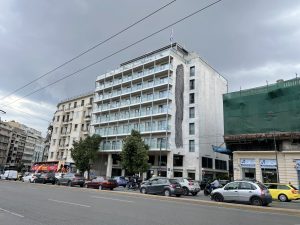
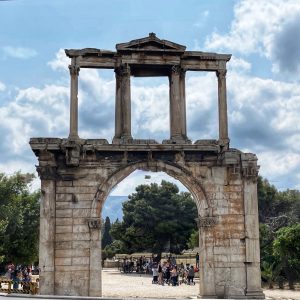
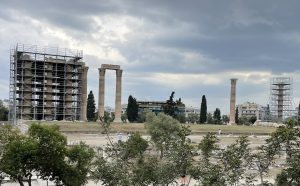
Last night we met our new local Greek guide Alex who will assist Yashar and Sam, then a wonderful and filling dinner and wine.

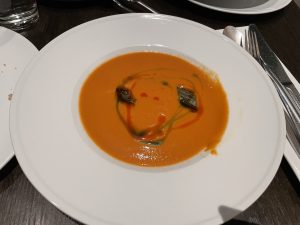


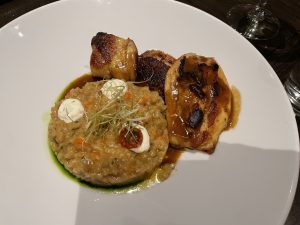

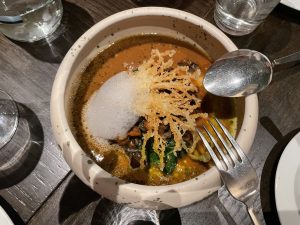
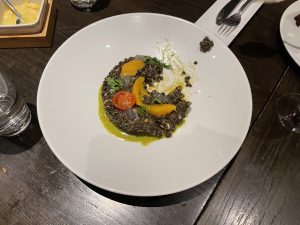
Our arrival marked the end of Stage 1 of The Odyssey, followed by a rest day and preparation for Stage 2, which will have us ride across the Greek mainland and then the Ionian islands. This would normally be when some possible newcomers would join us but this trip there won’t be any. We said goodbye to 3 in our group in Rhodes (Andrew, Tony and Jo)and 2 more this morning in Athens (John and Janice). We also say goodbye to my friend and our team’s soigneur, Marjolein, as she heads back to the reality of work and family in L’Escala Spain. She will be missed by the group!
Rest days on these bike trips usually mean catching up on some sleep, doing some laundry, and wandering around checking out the sites. But before we could do that, we had a local guide take us on an intensive tour of the Acropolis, which was very informative.

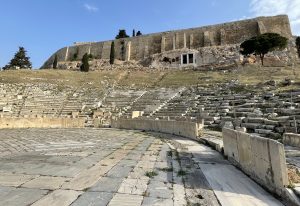 the first ever theatre in th world, the Theatre of Dionyseus
the first ever theatre in th world, the Theatre of Dionyseus 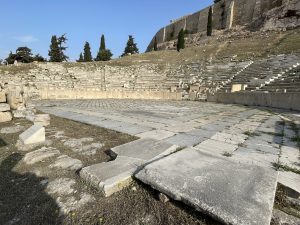
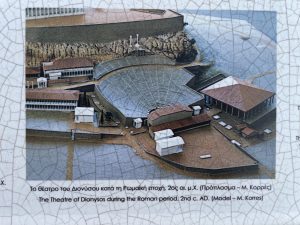 The high priest Thespis, from which the word Thespian is derived, began the plays in this theatre.
The high priest Thespis, from which the word Thespian is derived, began the plays in this theatre.

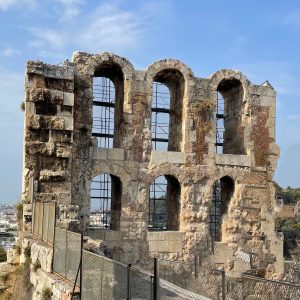
 This is the Odeon, a theatre built by Greeks during the Roman occupation of Athens, dedicated only to music…it is still used today.
This is the Odeon, a theatre built by Greeks during the Roman occupation of Athens, dedicated only to music…it is still used today.
The magnificent Acropolis, visible from almost every part of the city, is the hub around which Athens still revolves. Athens is a sprawling city of 4.5 million people, spread out below and around the Acropolis. This temple city, built in the 5th century BC, serves as a daily reminder to Greeks of their heritage and the city’s many transformations.
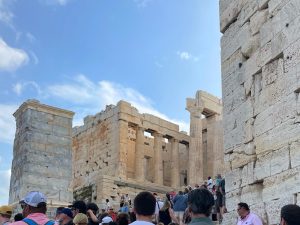 Looking toward the main gate to the Acropolis and temples, the marble stairs are over 2,500 centuries old!
Looking toward the main gate to the Acropolis and temples, the marble stairs are over 2,500 centuries old! 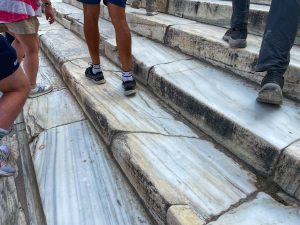

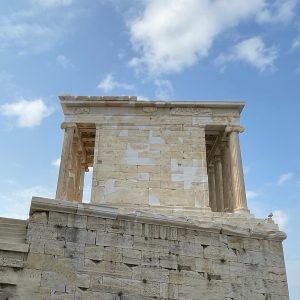

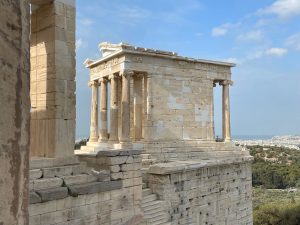
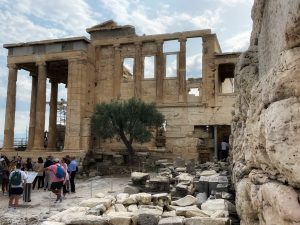

And of course the Parthenon! Marble everywhere!

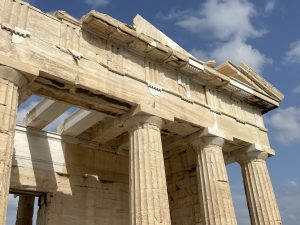
 and me and Yashar
and me and Yashar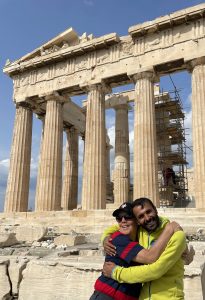
and Do Not Touch!
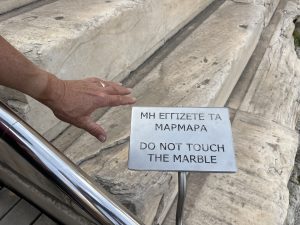
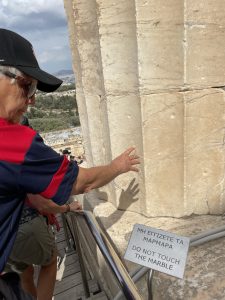
All over the urban basin, rooftops and balconies angle toward the landmark and our hotel for 2 nights gave us prime access to it and its newly built museum. 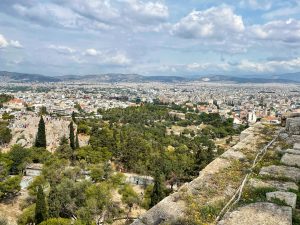
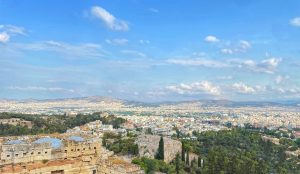
Athens – The City
Athens’ heyday was around 400 years BC, that’s when most of the classical monuments were built. During the Byzantine and Turkish periods the city decayed into just an insignificant little village, only to become the capital of the newly-liberated Greece in 1833. Ahead of the 2004 Olympics, almost the entire infrastructure was transformed: the Metro, trams, new ring roads and viaducts have eased the pressure of heavy traffic.
Athens is still a rather messy and chaotic place — it wouldn’t be Athens otherwise — and despite all the improvements still retains a great deal of its oriental charm. The whole coastal stretch from Piraeus to the old Hellenikon airport has been improved with new plantings, viaducts and paths for walking. The Plaka district is becoming more and more popular and it is on the way to catching up with Psyrri, Gazi and Rouf when it comes to restaurants and cafes.
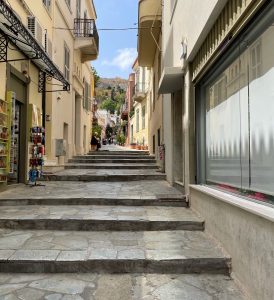
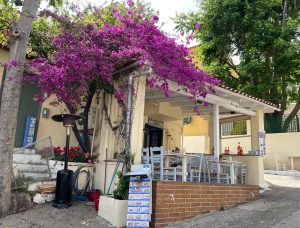
Changing of the Guard, Greek style: IMG_5750IMG_5750IMG_5750
